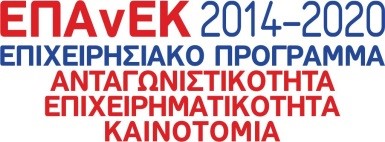ΑΙΙΜ International: Navigating the Future with a Unified Approach in Enterprise Content Management

Insights from AIIM International’s Webinar
In an insightful session hosted by AIIM International titled “Learn How Your Organization Can Thrive with a Single-Source of Truth,” experts navigated the intricate landscape of managing increasing volumes of enterprise content. The webinar featured Harvey Gross from Crawford Technologies, who eloquently discussed the shift from traditional, legacy systems to advanced, cloud-based platforms. The session dissected various migration strategies, exploring their advantages and challenges, and highlighted the transformative impact of a unified approach to content management.
In-Depth Analysis and Takeaways
Challenges of Fragmented Content Systems:
The webinar opened with a familiar challenge faced by many organizations – managing content sprawled across an array of databases, repositories, and business applications. This fragmentation often results in a patchwork of content management strategies, leading to inefficiencies and confusion. The struggle to harmonize disparate systems can be likened to trying to blend oil and water – a task that requires careful emulsification to achieve a seamless blend.
The Compelling Case for Consolidation:
A central theme of the discussion was the power and clarity that come from consolidating content management. This approach transcends mere organizational neatness; it is about streamlining operations, reducing costs, and elevating customer interactions. A single-source of truth not only simplifies the information landscape but also ensures that every piece of content serves its purpose more effectively.
The Cloud Migration Journey:
Transitioning to cloud-based platforms is akin to stepping into a new era of technological capabilities. The cloud offers expansive room for growth, adaptability, and integration, essential for businesses in today’s fast-paced environment. This migration is not just a change in infrastructure but a strategic move towards greater agility and responsiveness.
Legacy Formats and Compliance:
Addressing legacy formats during migration is a complex yet crucial aspect. This challenge is akin to translating a classic novel into a modern language while retaining its original essence. Maintaining compliance and effectively managing documents in their original formats is essential for legal and operational integrity.
A Real-World Success Story:
The webinar highlighted a case study of an insurance company that experienced the tangible benefits of this unified ECM approach. By migrating to a new, streamlined platform, the company was able to reduce the number of document repositories, retire outdated hardware, and achieve significant cost savings. This example serves as a practical demonstration of the efficiency and operational improvements that come with embracing a unified ECM strategy.
Critical Importance of Planning:
The webinar stressed that successful migration to a new ECM system is a meticulous and deliberate process. It involves detailed planning, comprehensive testing, and a keen focus on maintaining data integrity. Like a well-orchestrated symphony, every element of the migration needs to be in harmony to ensure a seamless transition.
Integration with Business Applications:
One of the future-forward aspects of modern ECM systems is their ability to integrate seamlessly with various business applications. This integration, facilitated by advanced web services and communication technologies, is vital for streamlined operations and overall business efficiency.
Future-proofing and Regulatory Compliance:
Looking ahead, it is crucial for new ECM systems to be adaptable to future technological advancements and evolving regulations. This adaptability is particularly important in terms of document accessibility and formatting, ensuring that the systems remain relevant and compliant in the ever-changing technological landscape.
Embracing Digital Transformation:
The session underscored the role of ECM in digital transformation initiatives. By adopting a cloud-based, unified approach to content management, organizations can not only manage their current content needs more effectively but also lay a foundation for future growth and innovation. This approach aligns with the broader goals of digital transformation, driving efficiency, agility, and competitive advantage.
Concluding Thoughts about Content Management
The AIIM International webinar illuminated the path towards a more integrated, efficient, and future-ready approach to enterprise content management. Adopting a unified, cloud-based strategy is more than a technological upgrade; it is a strategic move towards better information management, enhanced customer service, and regulatory compliance. As organizations navigate the complexities of modern enterprise content, this approach offers a roadmap for success, ensuring preparedness for technological shifts and aligning with the evolving needs of the digital age.



